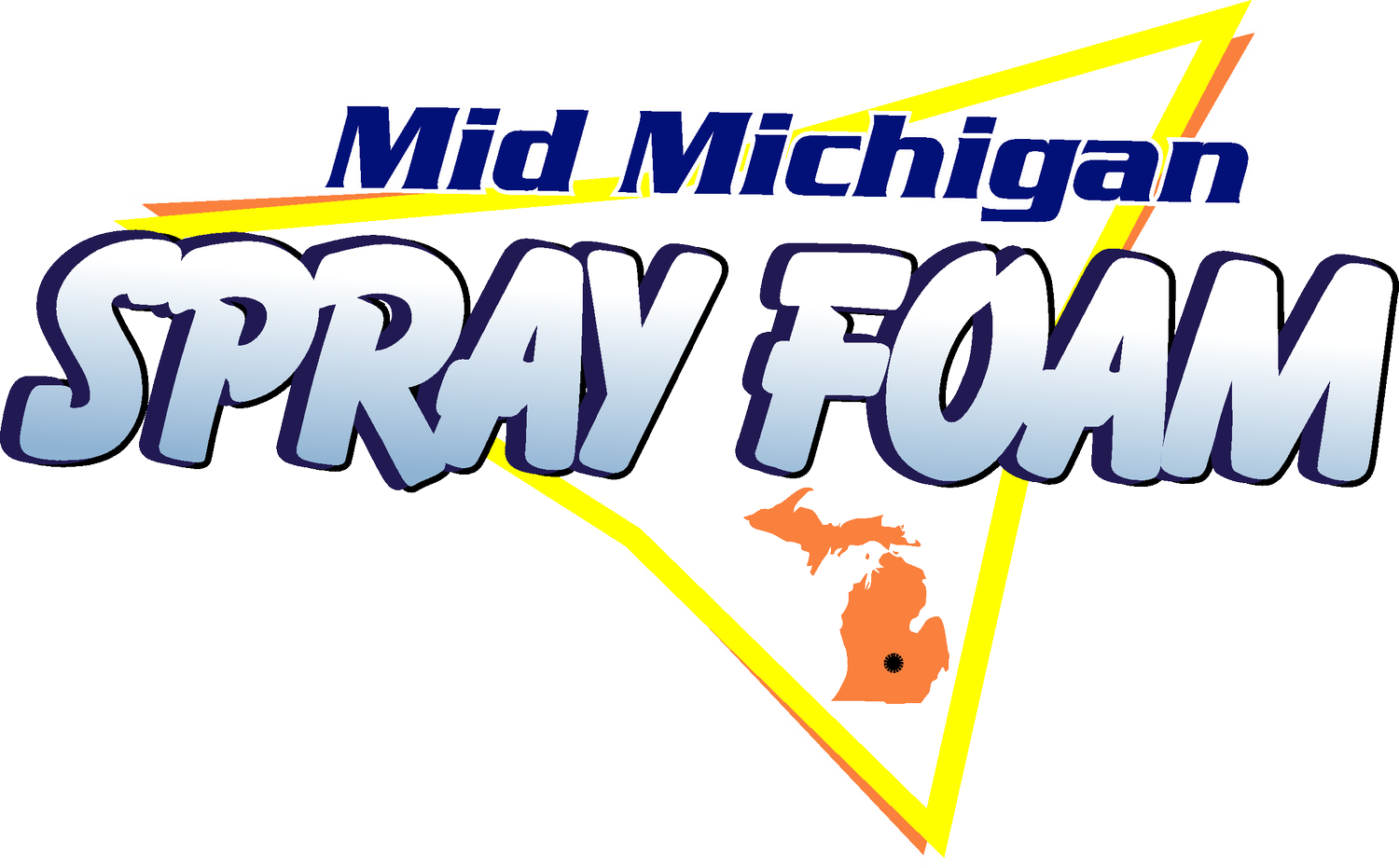Attic Insulation Upgrade in Grand Rapids
Lake‑effect snow and steady westerlies make Grand Rapids roofs work overtime. Warm air generated by furnaces rises into attics through recessed lights, plumbing stacks and top‑plate cracks, then leaks outside. That heat melts rooftop snow which refreezes at the eaves, spawning destructive ice dams. An unconditioned attic can waste up to 25 percent of a home’s winter fuel according to the U.S. Department of Energy. Attic insulation that Grand Rapids homeowners trust focuses on two actions: airtightness and high R‑value, in that order.
Air Sealing Equals Energy Control
Most attics already hold some blown‑in insulation, yet houses remain drafty because loose fibers cannot stop air currents. Closed‑cell spray foam solves this by bonding to the roof deck and top plates, blocking convective loops while supplying an R‑value near 7 per inch. We apply a 50 mm lift across the entire roof deck, then build to Michigan’s R‑49 target with open‑cell foam or dense‑pack cellulose. By moving the thermal boundary to the roofline, we bring ductwork and can‑lights into the conditioned envelope so HVAC equipment works in a 20 °C space instead of a sub‑zero attic.
An Oak Ridge National Laboratory study found unvented, foam‑sealed attics reduced duct‑system losses 25‑30 percent in cold climates. Homeowners see that translate into quieter furnaces, fewer temperature swings and AC systems that actually shut off on muggy July afternoons.
Cost, Rebates and Return
The question we hear most is: “What will this upgrade cost?” Our article on attic spray‑foam pricing explains that a typical 185 m² Grand Rapids bungalow runs $10,000–$13,000 depending on roof complexity. That figure includes removal of dirty loose‑fill, two‑part foam, an ignition‑barrier coating and fresh hatch weather‑stripping.
Consumers Energy currently rebates up to $1,000 for verified air‑sealing and insulation, and federal tax credits cover 30 percent of material cost (max $1,200). Combine incentives with documented gas‑bill drops of $350–$450 per year and simple payback lands near six winters.
Material Choices and Building Science
Closed‑cell foam doubles as a Class II vapor retarder, critical when sealing a cold roof deck. It also adds shear strength that helps rafters resist wind uplift, a plus when February gusts roar off Lake Michigan. We follow the International Residential Code unvented attic section R806.5 guidance: minimum 50 mm of impermeable insulation, then additional permeable insulation to hit total R‑value. This hybrid keeps roof sheathing above dew‑point so moisture cannot condense inside the assembly.
For homeowners wary of foam thickness, Oak Ridge research shows 38 mm of closed‑cell paired with loose‑fill achieves similar moisture control. We revise thickness only after hygrothermal modelling confirms safe sheathing temperatures.
Installation Timeline and Safety
A Grand Rapids retrofit normally spans two days:
Day 1 — Vacuum out old insulation; air‑seal chases; set negative‑pressure fans.
Day 2 — Spray closed‑cell lift; add open‑cell; apply intumescent coating; restore hatch; second blower‑door test.
Vent fans exhaust vapor to ≤1 ppm by evening so families sleep at home the same night. All foam used meets CAN/ULC‑S102 flame‑spread index < 25 and smoke‑developed < 450 once coated.
While spray foam costs more upfront, the analysis confirms superior lifetime savings thanks to permanent air sealing.
Ready For Ice‑free Eaves?
Mid‑Michigan Spray Foam serves Grand Rapids, Wyoming, Kentwood and surrounding Kent County towns. One upgrade delivers warmer winters, cooler summers and a roof free of dangerous ice dams.
